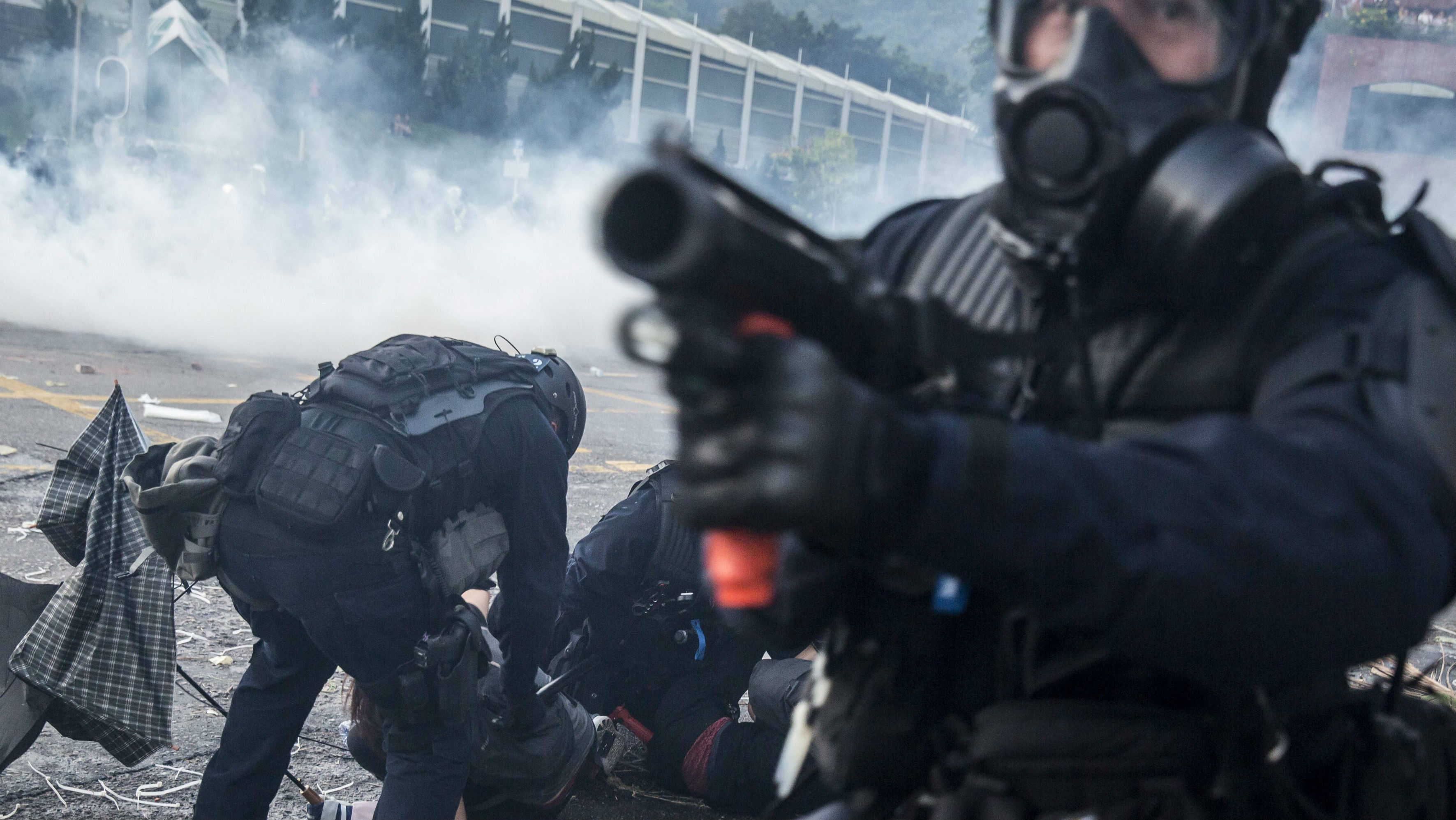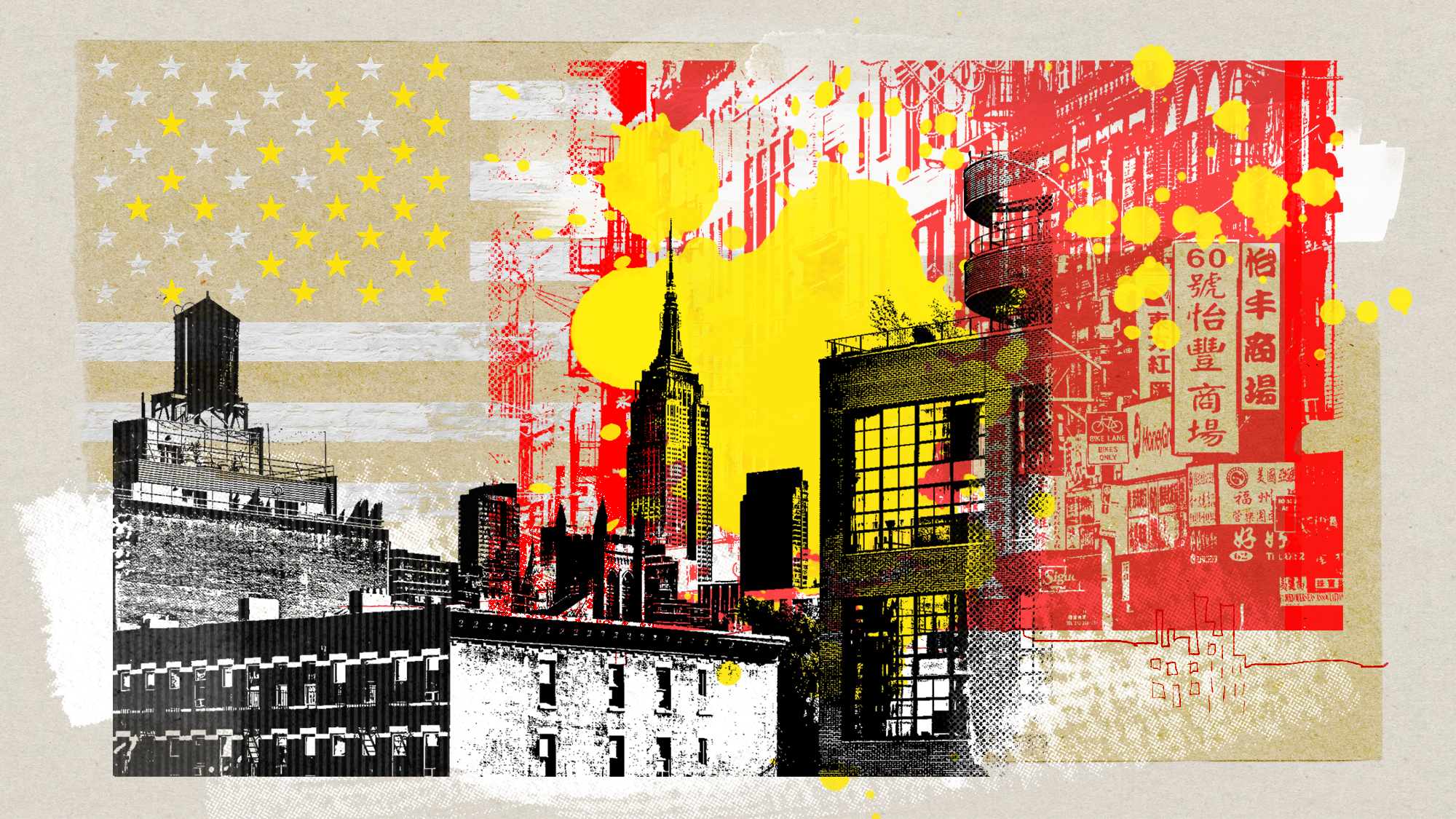What is happening in Hong Kong?
Pro-democracy protester shot as police open fire with live rounds during China National Day demonstrations

A teenage protester has been shot in the chest in Hong Kong amid the most widespread unrest in months.
Thousands of people have been demonstrating in central Hong Kong and at least six other districts, in defiance of a protest ban for the 70th anniversary of the People’s Republic of China.
“Though people have been shot by rubber bullets in previous protests, this is the first injury from a live round,” says the BBC.
The Week
Escape your echo chamber. Get the facts behind the news, plus analysis from multiple perspectives.

Sign up for The Week's Free Newsletters
From our morning news briefing to a weekly Good News Newsletter, get the best of The Week delivered directly to your inbox.
From our morning news briefing to a weekly Good News Newsletter, get the best of The Week delivered directly to your inbox.
The shot activist, reported to be a student, is said to be in a critical condition. More than 30 other people have also been injured in the clashes, as “police fired tear gas and protesters threw petrol bombs”, says the broadcaster.
Confirming that an 18-year-old man had been shot, police said: “As an officer felt his life was under serious threat, he fired a round at the assailant to save his own life and his colleagues’ lives.”
So how did the protests start and why have they turned so violent?
What are the Hong Kong protests about?
A free daily email with the biggest news stories of the day – and the best features from TheWeek.com
Under the “one country, two systems” style of government brought in after Hong Kong was returned to China in 1997, the city has enjoyed semi-autonomy from the mainland and a separate set of laws that allow greater social and economic freedoms.
But in recent years, Beijing has sought to bring Hong Kong more in line with the rest of China - a goal that pro-democracy activists say has resulted in the erosion of the city’s freedoms.
Legislation proposed in April designed to make it easier to extradite people from the territory to face trial in China proved to be the final straw.
Critics said the legislation would undermine the country’s semi-autonomous legal system and could be used to make critics of the Chinese regime “disappear”. Human rights groups worldwide have repeatedly raised concerns about China’s use of torture, arbitrary detentions and forced confessions, and problems in accessing lawyers in the country.
As a result, Hong Kong has seen a wave of protests that have attracted millions of demonstrators over the past four months. The bill was suspended and then formally withdrawn in September, but this hasn’t put an end to the unrest.
–––––––––––––––––––––––––––––––For a round-up of the most important stories from around the world - and a concise, refreshing and balanced take on the week’s news agenda - try The Week magazine. Get your first six issues free–––––––––––––––––––––––––––––––
What do the protesters want now?
Activists say that the withdrawal was “too little, too late” and that they are fighting for the future of Hong Kong.
They have called for an amnesty for all arrested campaigners, an independent inquiry into alleged police brutality, and the withdrawal of the term “riot” to describe their demonstrations. In addition, many want the resignation of the territory’s chief executive, Carrie Lam, and the introduction of universal suffrage for the next election to choose a chief executive and Hong Kong’s parliament, the Legislative Council.
Anger has also turned against the police, who have been accused of using excessive force against the demonstrators.
Activists believe there has been collusion between the authorities and triads, Hong Kong’s organised crime groups, after masked and armed thugs attacked metro commuters, protesters and journalists in what appeared to be an orchestrated incident in July.
“As the police’s weapons have become more excessive - tear gas fired in train stations, rubber bullets shot into faces, sponge grenades, water cannons - the students’ responses have become increasingly indignant,” writes Amanda Tattersall, a research lead at Sydney Policy Lab, in an article on The Conversation. “They have engaged in targeted actions like street fires, petrol bombs and vandalism to public infrastructure and government sites, like the city’s mass transit system.”
According to Bloomberg, more than 1,700 protest-related arrests have been made so far, and more than 2,700 tear gas canisters used by Hong Kong police.
What happens next?
The Financial Times likens the conflict to “the two great weather fronts that characterise the climate of global affairs - the democratic tradition of the West and China’s muscular authoritarianism”.
And Beijing shows no sign of easing up. In a speech ahead of a massive military parade in Beijing today to mark 70 years of Communist Party rule, President Xi Jinping said that China would “maintain the lasting prosperity and stability” of Hong Kong. He added: “No force can shake the status of our great motherland, no force can obstruct the advance of the Chinese people and Chinese nation.”
Pro-Beijing Hong Kong politician Junius Ho Kwan-yiu has called for emergency laws to restore order, saying: “It seems there is no sign of this coming to an end until the government is determined to clamp down and call for emergency measures under Cap 241 - the Emergency Regulations Ordinance.”
But in an article on YaleGlobal Online, journalist Mike Chinoy draws parallels between Hong Kong and the long-running clashes in Northern Ireland. “As the crisis in Hong Kong shows no sign of resolution, the strife increasingly resembles the early years of what became known as ‘the Troubles’ – a conflict that lasted 30 years and left 3,000 people dead,” he says.
“As in Northern Ireland, government intransigence and police overreaction have transformed a peaceful one-issue protest campaign into a movement demanding sweeping change... It may be only a matter of time before a radical minority concludes that they have little choice but to adopt more violent tactics.”
-
 Political cartoons for December 14
Political cartoons for December 14Cartoons Sunday's political cartoons include a new White House flag, Venezuela negotiations, and more
-
 Heavenly spectacle in the wilds of Canada
Heavenly spectacle in the wilds of CanadaThe Week Recommends ‘Mind-bending’ outpost for spotting animals – and the northern lights
-
 Facial recognition: a revolution in policing
Facial recognition: a revolution in policingTalking Point All 43 police forces in England and Wales are set to be granted access, with those against calling for increasing safeguards on the technology
-
 Femicide: Italy’s newest crime
Femicide: Italy’s newest crimeThe Explainer Landmark law to criminalise murder of a woman as an ‘act of hatred’ or ‘subjugation’ but critics say Italy is still deeply patriarchal
-
 Brazil’s Bolsonaro behind bars after appeals run out
Brazil’s Bolsonaro behind bars after appeals run outSpeed Read He will serve 27 years in prison
-
 Americans traveling abroad face renewed criticism in the Trump era
Americans traveling abroad face renewed criticism in the Trump eraThe Explainer Some of Trump’s behavior has Americans being questioned
-
 Nigeria confused by Trump invasion threat
Nigeria confused by Trump invasion threatSpeed Read Trump has claimed the country is persecuting Christians
-
 Sanae Takaichi: Japan’s Iron Lady set to be the country’s first woman prime minister
Sanae Takaichi: Japan’s Iron Lady set to be the country’s first woman prime ministerIn the Spotlight Takaichi is a member of Japan’s conservative, nationalist Liberal Democratic Party
-
 Russia is ‘helping China’ prepare for an invasion of Taiwan
Russia is ‘helping China’ prepare for an invasion of TaiwanIn the Spotlight Russia is reportedly allowing China access to military training
-
 Interpol arrests hundreds in Africa-wide sextortion crackdown
Interpol arrests hundreds in Africa-wide sextortion crackdownIN THE SPOTLIGHT A series of stings disrupts major cybercrime operations as law enforcement estimates millions in losses from schemes designed to prey on lonely users
-
 China is silently expanding its influence in American cities
China is silently expanding its influence in American citiesUnder the Radar New York City and San Francisco, among others, have reportedly been targeted